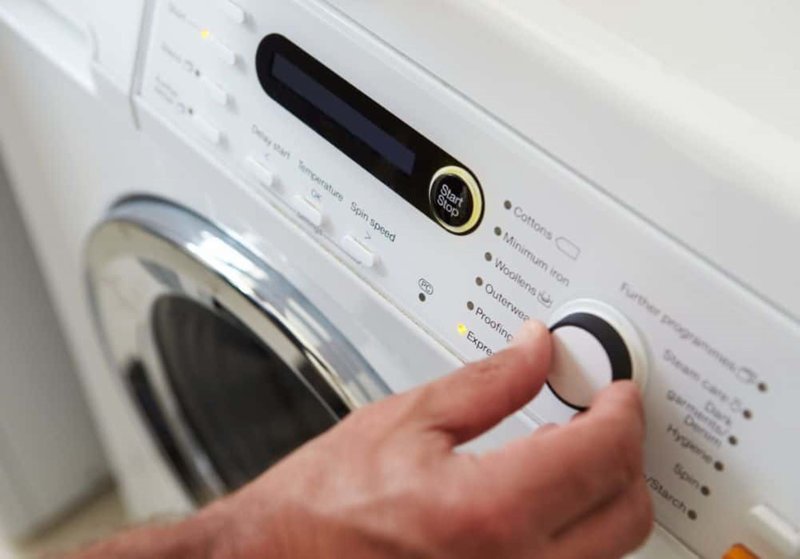
Whirlpool is a brand many of us rely on, and for a good reason—they’re usually pretty dependable. But like any piece of machinery, they can run into hiccups. When your dryer flashes an error code, it’s asking for a bit of attention. The E2 code in particular usually points to an issue with the cycle’s temperature or possibly a problem with the control board. Now, this might sound technical and a bit intimidating, especially if you’re not a “handy” person, but don’t worry. Think of it like your car’s check engine light—it’s just a nudge to look a little closer.
Understanding the E2 Error Code
When your Whirlpool dryer displays an “E2” error code, it’s like a tiny distress signal. But what exactly is it trying to communicate? In most cases, this code is related to a temperature sensor issue. Imagine your dryer as a mini climate system, where things need to stay within a certain range to work optimally. If the temperature sensor isn’t functioning correctly, it can’t measure the heat levels accurately, leading to potential overheating or underheating.
Technically speaking, the temperature sensor is like the thermostat in your home. Just as your thermostat regulates your house’s temperature, the sensor makes sure your dryer’s environment is just right. If this sensor is faulty, it could mean the dryer isn’t heating up properly or is getting too hot. This can cause your clothes to take forever to dry or, in the worst-case scenario, pose a safety risk due to overheating.
You might relate this to cooking—when you’re making a stew and the burner’s too high, it boils over; too low, and it takes forever to cook. The same principle applies here. With the E2 error, the dryer can’t “see” the temperature correctly, which signals a need for a check-up. Hence, it’s a smart move to pause and address this issue rather than continue using the dryer blindly.
Causes of the E2 Error and Implications
Let’s dive into what might cause this sneaky E2 error to pop up. The root issue lies in the temperature sensor or sometimes the thermistor, which measures heat levels inside the dryer. Over time, parts can wear out, become misaligned, or get damaged. Imagine your favorite pair of shoes—eventually, they show signs of wear and tear, right? Appliances aren’t much different; continuous use can lead to gradual degradation.
Now, if the E2 code is appearing, it might also indicate a problem with the control board. Picture the control board as the dryer’s brain—it processes signals and makes decisions based on the input from various sensors. If there’s a miscommunication between the temperature sensor and the control board, you’re likely to see errors like E2 popping up.
Ignoring the E2 code can have implications. Apart from longer drying times, you might see uneven drying or even potential safety hazards. Overheating can be particularly concerning—much like leaving a pot unattended on a high flame. It’s essential to address this as soon as possible to avoid any damage to your clothes or the dryer itself.
Steps to Take When Facing the E2 Error
So, you’ve spotted the E2 error, and here’s what you can do next. First and foremost, resist the urge to keep using the dryer like nothing’s happened. Much like continuing to drive a car without oil, it’s not the best idea. Start by unplugging the dryer for a few minutes. This can sometimes act as a simple reset, just like rebooting your computer when it’s acting up.
If the error persists, it’s time to look deeper. Check the manual for specific error code advice. A close inspection might reveal any visible signs of damage, like frayed wires or burnt smells, which are telltale signs of something amiss. If you’re feeling adventurous, you could try accessing the internal components, but it’s always wise to consult with or hire a professional, especially if you’re not confident about handling electrical appliances.
Finally, remember the value of regular maintenance. Like getting your car serviced or cleaning out your gutter, keeping your dryer in top shape means fewer headaches. Make it a habit to check for lint build-up and ensure vents are clean. This not only extends the life of your dryer but also keeps issues like the E2 error at bay.
Here’s the bottom line: while it’s tempting to ignore an error and continue using your dryer, the safest bet is to address the E2 code promptly. Think of it as a cough that doesn’t go away; you wouldn’t ignore it forever without consulting a doctor, right? Taking proactive steps now can save you from bigger headaches—and potential hazards—down the line.
If you’re unsure or hesitant, reach out to a qualified technician who can provide a thorough diagnosis and repair. By doing so, you ensure your dryer continues to serve you efficiently and safely. In the world of home appliances, a little attention goes a long way, and a watched pot—or in this case, dryer—never overheats. Stay proactive, stay safe, and keep your dryer running smoothly.